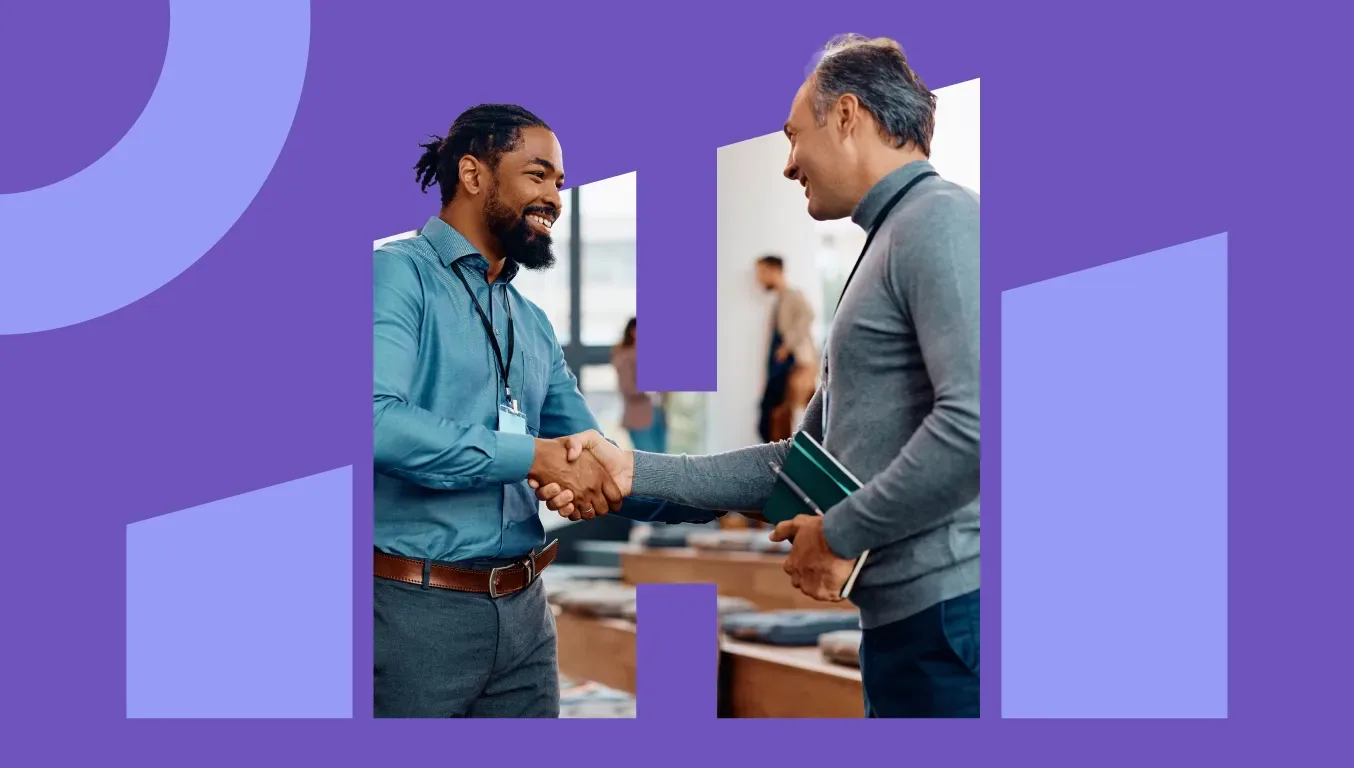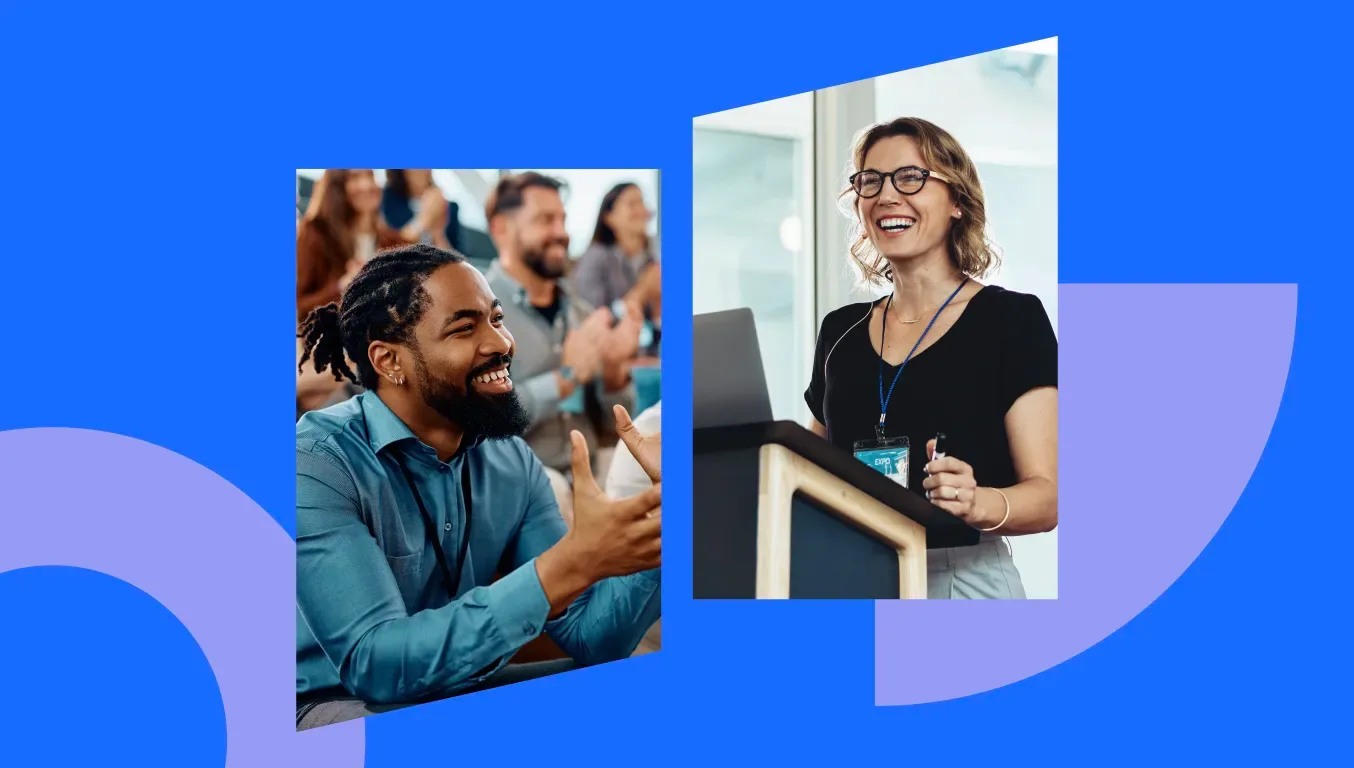There are sometimes occasions when hosting a meeting where you do not need, or in fact want to have a strict agenda, but rather have an overall driving purpose or goal. If this is the case, holding an event inspired by Open Space Technology could be a great approach to achieve your goals.
This article looks at the what open space technology is, why it can be beneficial and how you can easily host one using Mentimeter.
What is Open Space Technology?
Open Space Technology (OST) is a versatile approach to purpose-driven leadership. It enables leaders to host meetings, conferences, corporate events in an effective way. What makes OST events unique is that they focus on a specific purpose or task, but start-off without any formal agenda, only an overall purpose or theme.
“Open Space is the only process that focuses on expanding time and space for the force of self-organisation to do its thing. Although one can't predict specific outcomes, it's always highly productive for whatever issue people want to attend to. Some of the inspiring side effects that are regularly noted are laughter, hard work which feels like play, surprising results and fascinating new questions.” — Michael M Pannwitz, Open Space expert
What does an Open Space Technology event look like?
An "open space" meeting begins with a short introduction by the facilitator. Here, the purpose is outlined and the principles of OST are explained. The facilitator should also outline the 3 principles and one law of open space technology, which are as follows:
1. The people who come are the right people: This reminds people in the small groups that getting something done is not a matter of having the "right" people but rather that the right people are those who care to do something. This care is shown by showing up and taking part.
2. Whatever happens is the only thing that could have: This keeps people focused on the here and now rather than focuses on what might have happened or should have happened.
3. Whenever it starts is the right time: This alerts people to the fact that time isn't so important. In other words, do what you have to do, and when it’s done, move on to something more useful.
And finally, the "law of two feet": This states that if at any time you find yourself neither learning nor contributing – use your two feet and move somewhere else. Somewhere else might be another group, or even taking a break. No matter what, don’t be unproductive.
Create a working agenda
After this introduction, the group creates the working agenda based around the overall focus. Individuals post their issues in bulletin-board style. This can be done using a whiteboard, sticky notes or an audience response system. Each "point" becomes an idea for discussion.
Conduct breakout sessions
Next, the group will conduct break out sessions to work on each individual point order to explore the topic more and come to some kind of decision if needed.
What can you achieve from holding an open space event?
Fans of OST consider that this type of event consider that it is a more productive way of getting things done in a group setting, particularly if the task at hand is particularly complex.
Harrison Owen, the person who developed the concept explains that this approach works best when these conditions are present: - High levels of complexity, in terms of the outcomes that need to be achieved; - Diversity, when there is a group of people from different background and different experiences that can come together to work on the same goal; - Conflict, meaning that there is a real issue that people care about at stake; and - Urgency, meaning that action needs to be taken now.
How to hold an open space event with Mentimeter
One of the core principles of OST events is that they are live and evolve during the actual event, rather than being pre-planned and static. A second core principle is that, whilst there is usually a single facilitator to run proceedings, the event itself is very much driven by an audience.
With these principles in mind, you need to make sure that you have the right set up in place. If you are a very small group; paper, pens and group discussion might be the most effective way to conduct your session. However, if the group is bigger, you may want to consider Mentimeter as a tool that can assist you in running a successful OST event. This part of the article will explore just that!
Build your presentation in real-time
It is important to document your OST event so that you, as a facilitator, other participants and any other stakeholders can refer to it later. Of course, you can create good old-fashioned meeting notes, but consider using Mentimeter Quick Slides to document your presentation during the event. Easy-to-add and create slides means that you can skip boring meeting notes and instead create a great presentation (where you can also collect results from polls, as I’ll explain in the next point).
Mentimeter can also be used during the breakout sessions to create notes that can be shared with the facilitator who can later combine the presentation to make a master copy that can be easily distributed. This will save time whilst also creating more clear and coherent meeting notes that are all created in the same format.
Poll your audience quickly with Mentimeter will make collaboration and decision-making easy. Working together is a really important part of Open Space Technology. It can be difficult to do this in a constructive manner that doesn’t end up in everyone shouting over each other, especially when you’re in a big group. By using Mentimeter you can avoid arguments and instead get concise answers quickly.
Ensure that everyone’s voice is heard with Q&A
Of course, discussion is a big part of OST events, so make sure you facilitate this properly. When discussing issues in groups, you will notice that the dominant, more extroverted personalities will tend to take over the discussion, often leaving others sitting in silence. Mentimeter’s Question from audience feature allows facilitators to open up a more equal environment where everyone is able to participate.
You can use this feature in two different ways:
- Allow your audience to ask question throughout and answer them as they come.
- Stop for specific Q&A sessions throughout the event, when it feels appropriate.
To learn more about this feature take a look at these resources:



